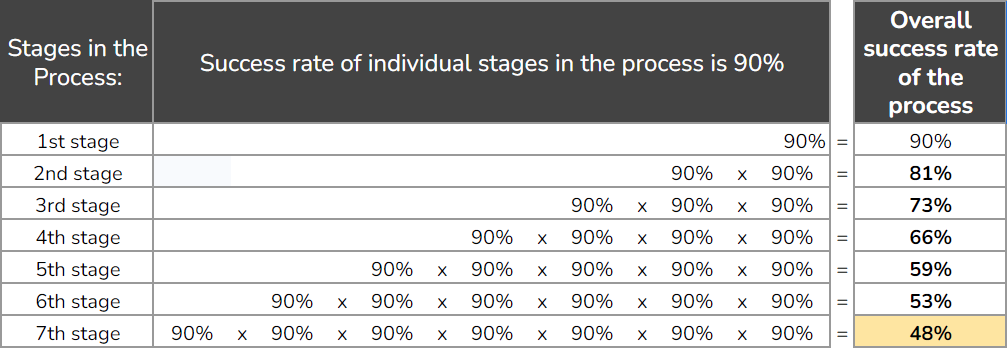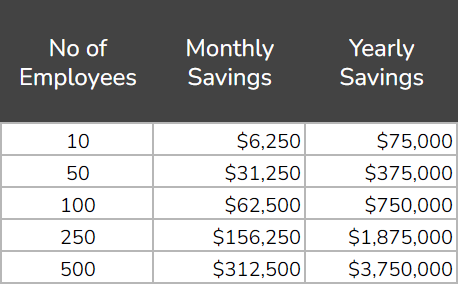There is no human activity without processes spanning tens of thousands of years back. Starting fires, crafting tools and weapons, smelting ores in the Bronze Age, hunting mammoths, tilling the land, building huts, clothing, food preparation… all these activities followed certain processes and procedures that were passed down through generations and refined.
“Therefore, claiming that processes are unnecessary in a business is meaningless. There is no business without processes.”
Do You Operate Based on “Tribal Knowledge” or Documented Processes and Procedures?
Tribal knowledge refers to unwritten knowledge, experiences, and information within a business. When our business relies (solely) on tribal knowledge, it holds immense value because it’s the only place where we truly understand how things work and should be done.
At the same time, this poses a significant challenge to tribal knowledge.
- It resides in the minds of entrepreneurs and experienced employees, transmitted orally to newcomers, passed down from generation to generation.
- Nobody has a complete overview and control over tribal knowledge in the business. Generally, it’s unsystematized, unoptimized, incomplete, and often inaccurate.
Do You Know the Paradox of Tribal Knowledge?
This paradox relates to the belief and rhetoric of management that business success depends on people, their knowledge, skills, or one or a few “super” employees who can do everything.
This approach is common in businesses that haven’t developed or can’t rely on their business organizational infrastructure, processes, and procedures. They’re constantly in search of “super” employees, rewarding and privileging them, nurturing such a culture in the company.
Such businesses fail to break free from dependence on tribal knowledge and may even contribute to enhancing the extortion capacity of these “super” employees.
The solution is to articulate and document knowledge and best practices through processes and procedures, turning them into the company’s assets.
- The existence of processes isn’t tied to the company’s size. If prehistoric humans could start fires using learned processes and procedures, the same applies to the smallest and largest companies in the world.
- Processes and procedures aren’t stifling or slowing down work and progress in the company. They’re not bureaucratic tools. On the contrary, they help reduce errors and free up time for more productive, creative, and profitable activities.
- Questions that arise regarding business processes are:
- Are they documented (written) or unwritten?
- How well or poorly are these processes designed?
- Are they consciously articulated, continuously developed, and improved?
- Are they used for effective employee management and goal achievement?
or
- Have processes and procedures turned into extensive bureaucratic documents devoid of practical value for the company?
Processes are the Guarantee of Business Success
Let’s imagine we believe we have well-designed processes and procedures and our employees are well-trained to execute them. How well-trained? Let’s say their success rate is 90%. That’s a very high success rate!
Is that really the case?
If partially successful stages of a process directly lead to the result of the previous stage’s work, in the symbolic example in the table below, we can see the experience we all have in business.

Let’s examine the success of this process. In the example, we’re considering a process consisting of 7 stages.
For easier comprehension, let’s simplify this example. Let’s consider it as the production of “something.” If each stage in this kind of process has a 90% success rate (for instance, out of 100 pieces of “something,” 90 are successfully processed), then the overall success rate at the end of the process is only 48%. In other words, out of the required 100 pieces of “something,” only 48 are obtained at the end of the process.
This isn’t acceptable. It’s impossible to survive in the market with such a low success percentage. In reality, business people have to constantly go back and invest efforts to make employees correct mistakes until the result becomes acceptable. This is physically and mentally exhausting. Not to mention that corrections consume a lot of time and represent significant hidden costs.
Now, let’s look at the following example:

In this symbolic example, all stages of the process are successful at 100%, except the fifth stage, which has completely failed. Just because of one stage’s failure, the overall success rate is 0%. This means that the result of the process is entirely absent. Efforts invested in other stages become worthless and represent nothing more than unnecessary costs.
This reminds us that “a process is as strong as its weakest link.” This underscores the need for the existence and definition of processes as well-designed and controlled units to prevent minor errors from ruining overall results.
“Business people with well-designed and documented processes can control business events in their company and anticipate errors using those processes. They experience much greater and longer-term success in the market. After the initial efforts invested in defining processes, they can expect smoother and faster day-to-day operations.”
The answer to the question: “Why can’t we do without business processes?” is provided at the beginning. Processes already exist within the company and can’t be removed. The real question is:
How Much Is It Worth to Dedicate More Attention to Processes?
Here are a few reasons in favor of this.
With well-organized processes and procedures:
- Everyone has clear roles.
- We know who needs to do what.
- We know how things should be done.
- We know when things need to be done.
- And why we’re doing something.
- Best practices accumulate and improve.
- There’s no need for random work.
- Work becomes simpler.
- Errors are prevented.
- Consistently good results are guaranteed.
- Efficiency improves.
- Costs decrease.
- Accountability increases.
- Communication between employees is simplified.
- Training becomes easier and faster.
- Overall, business processes speed up.
- Management becomes simpler and easier.
- Decision-making processes are simpler and faster.
- Control is made easier.
Let’s Consider the Benefits of Using Documented Processes Solely Through Saved Work Hours.
Let’s assume the cost of the average monthly wage is about $5000.
If we save 1 hour per day per employee through better organization and management, the yearly savings would be as follows (depending on the company’s size):

Is It Worth It?
“Savings” can be viewed in at least two ways:
- With fewer employees, we can complete existing tasks.
- With the same number of employees, we can do more work and generate more revenue.
Then:
- Let’s calculate our savings.
- Let’s imagine what we could do with that money (within the company or personally).
FAQ:
- Why are processes important in businesses? Processes are important in businesses because they enable organization, efficiency, and error reduction. They provide clear roles, defined steps, and goals, making it easier to manage employees and achieve business objectives.
- Are processes bureaucratic tools? No, processes aren’t bureaucratic tools. On the contrary, they’re tools for improving efficiency and productivity. Well-designed and documented processes reduce errors, facilitate communication, and allow better management of business events.
- How can processes help save employee work hours? Well-organized and optimized processes reduce the time required for task preparation and execution, and most importantly, they reduce the occurrence of errors. Saving one hour per day per employee can result in significant annual savings in payroll costs.
- How can processes be applied to different company sizes? Processes are important regardless of company size. Whether a company is small or large, well-designed processes can improve organization, efficiency, and business outcomes.
- How can processes be continuously improved? Processes can be continuously improved by monitoring results, identifying weak points, and implementing enhancements. Regularly listening to feedback from employees and clients can help identify areas for process improvement.
- How can processes be used to manage employees? Processes can be useful tools for efficiently managing employees. Clearly defined processes allow employees to know what’s expected of them, how to perform tasks, and when to complete them. This simplifies delegation, progress monitoring, and goal achievement.
- How can processes be used to achieve better results? Processes can help achieve better results by reducing errors, increasing efficiency, and improving product or service quality. Well-designed processes enable consistency and uniformity in work, leading to customer satisfaction and enhanced competitiveness.

